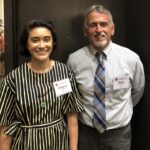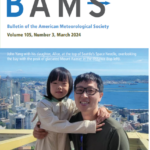A new study published online in the journal Proceedings of the National Academy of Sciences provides a link to CO₂ warming with broadening areas of droughts.
In his paper, lead author Dr. William K. M. Lau, a University of Maryland senior research scientist at the Earth System Science Interdisciplinary Center (ESSIC), examined changes in the Hadley Circulation (HC), the tropical atmospheric circulation cell closest to the equator.
Lau explained he was originally interested in the research because he was uncomfortable with the prevailing opinion that global warming weakened the HC and sought to untangle both unanswered questions and contradictions.
“Everyone knows that under global warming, the earth gets warmer and wetter,” said Lau. “Yet we keep hearing about severe droughts and increased frequency and intensity of wildfires, suggesting a drier climate.”
In the study, there was an observed change in the HC, with warm air rising faster and higher within a narrower band. The same air then descended from the upper troposphere across a much broader spectrum of the more populous mid-latitude regions of the Earth.
Robust fluctuations in the HC indicated a connection to increased general dryness, with reduced rainfall and diminished tropospheric relative humidity, especially in subtropical and tropical land regions. The global dryness signal observed was greatest, according to Lau’s paper, in several water-cycle quantities he studied.
This connection suggests CO₂ warming could be associated with global dryness and, therefore, associated with the prolonged droughts seen worldwide in recent years.
While these findings infer a connection, Lau cautions that the data collected was from model projections rather than observations. Still, the findings can be used to detect future climate change due to greenhouse warming.
His study also provided explanations for other observed changes.
“Under global warming,” said Lau, “a strengthening of the Hadley Circulation in the form of a ‘deep tropical squeeze’ has led to an overall reduction in tropospheric relative humidity in conjunction with a rise in the tropopause, widening of the subtropics and expansion of the arid zones on land.”
Lau performed this study alongside Dr. Kyu-Myong Kim, a Research Physical Scientist at NASA’s Goddard Space Flight Center.
In the future, Lau plans to determine whether these patterns are also seen in observations and to more closely examine the results of changes in the HC.
“I will focus more on the impact of the HC on regional climate, such as western and southwestern U.S.,” said Lau, “and Mexico and northern Brazil, where the models show strong signals of prolonged drought due to global warming.”






